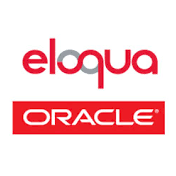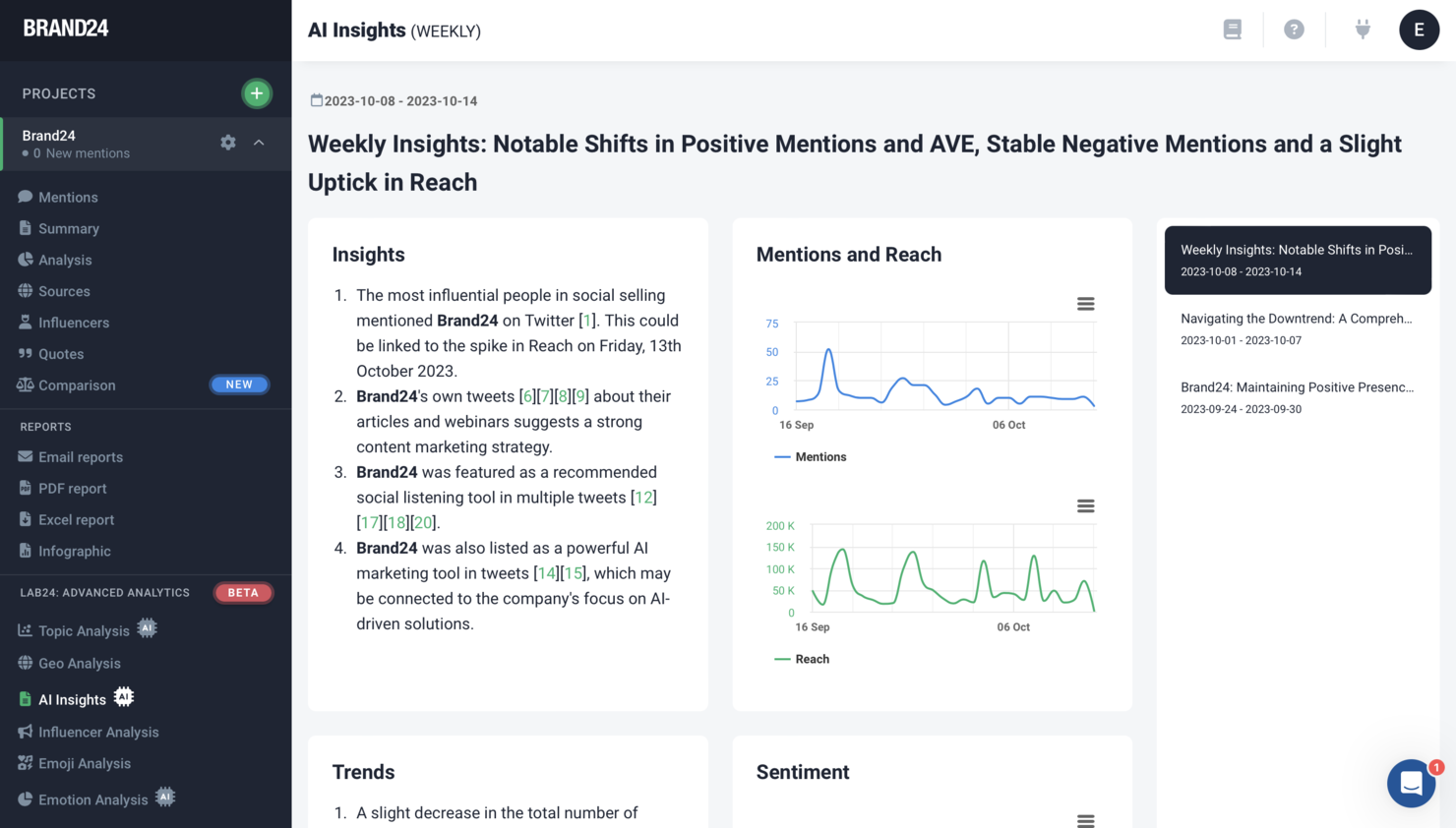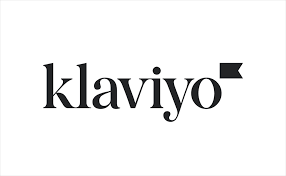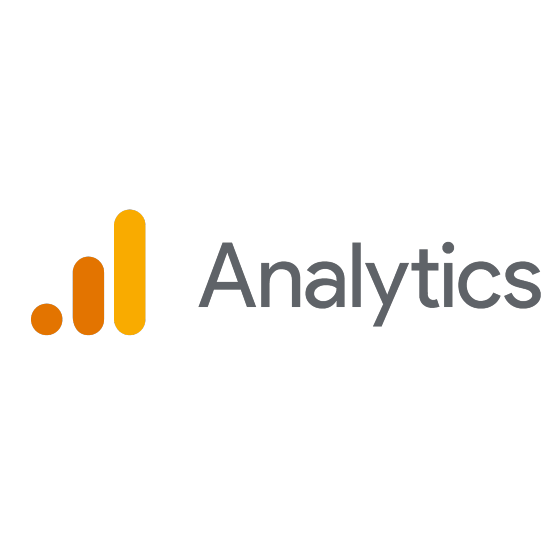10 Best Marketing Strategy Software Shortlist
Here's my pick of the 10 best software from the 26 tools reviewed.
Our one-on-one guidance will help you find the perfect fit.
With so many different marketing strategy software solutions available, figuring out which is right for you is tough. You know you want tools for market analysis, campaign planning, budget management, and performance tracking—but now need to figure out which solution is best. I've got you! In this post, I'll help make your choice easy, sharing my personal experiences using dozens of different marketing strategy tools with brands of all sizes, with my picks of the best marketing strategy software overall.
What Is Marketing Strategy Software
Marketing strategy software is a digital tool designed to aid businesses in planning, executing, and monitoring their marketing strategies. It encompasses features for market research, campaign planning, budget allocation, and performance analysis. The purpose is to help in identifying target audiences, setting measurable goals, and tracking the effectiveness of marketing campaigns.
-

Eloqua
Visit WebsiteThis is an aggregated rating for this tool including ratings from Crozdesk users and ratings from other sites.4.3 -

Optimizely
Visit WebsiteThis is an aggregated rating for this tool including ratings from Crozdesk users and ratings from other sites.4.2 -

Uberflip
Visit WebsiteThis is an aggregated rating for this tool including ratings from Crozdesk users and ratings from other sites.4.3
Overviews Of The 10 Best Marketing Strategy Software
Here are my summaries of the software I chose for this list and why I think they deserve extensive consideration.
Adverity is a data platform designed to help marketing teams manage and analyze their data. It enables users to collect, transform, and share data across various channels.
Why I picked Adverity: I picked Adverity because it offers features that are especially useful for building data-driven marketing strategies. Its data transformation tools let you clean, organize, and prep large datasets for analysis, helping ensure your insights are based on accurate, structured data. The AI-powered analytics surface trends and patterns that might otherwise go unnoticed, giving your team a deeper understanding of campaign performance and customer behavior. These insights can guide everything from budget allocation to content targeting. Altogether, Adverity helps marketing teams move from raw data to actionable strategy faster and with more clarity.
Adverity Standout Features and Integrations
Features include data monitoring tools that help ensure the accuracy and readiness of data for analysis. The platform's data sharing capabilities allow users to distribute data to various destinations as needed. Additionally, Adverity provides a range of data connectors, facilitating the collection of data from multiple sources.
Integrations include Google, Meta, TikTok, Google BigQuery, Looker Studio, Facebook Ads, Amazon Advertising, Hubspot, Salesforce, Amazon S3, Snowflake, and Microsoft Azure.
Pros and cons
Pros:
- Can harmonize data from various sources
- Ability to create personalized dashboards
- Scalable for businesses of various sizes
Cons:
- Certain configurations may require technical knowledge
- The initial setup can be time-consuming
New Product Updates from Adverity
Adverity's New Data Connectors for Enhanced Integration
Adverity's update introduces five new data connectors, including Oracle Eloqua and Salesforce Commerce Cloud, enhancing data integration capabilities. For more details, visit Adverity Updates.
Wrike is a project management tool designed to help teams collaborate more effectively and manage their projects with ease. It offers features such as task management, time tracking, and reporting tools to streamline workflows and improve productivity. Teams can also benefit from customizable dashboards and real-time updates to stay on top of their tasks and deadlines.
Why I picked Wrike: Wrike is a project management platform that enhances team collaboration and productivity through automation and customizable tools. A standout feature is its customizable request forms, which automate work requests to simplify the intake process. This not only reduces the need for manual entry, but also eliminates bottlenecks and ensures that all necessary project information is captured from the start. Additionally, Wrike's adjustable Gantt charts and resource management tools are essential for visualizing project timelines, efficiently allocating resources, and keeping marketing campaigns on track.
Wrike Standout Features and Integrations
Features include collaboration tools, multiple work views, mobile access, reporting and analytics, end-to-end work management, request management and automation, budget tracking and reporting, and PMO, which provides project managers with tools to align strategy with execution.
Integrations include Salesforce, Power BI, Tableau, Google Drive, Microsoft SharePoint, OneDrive, Microsoft Teams, Zoom, and Adobe Creative Cloud.
Pros and cons
Pros:
- Simplifies task assignment
- Offers an interactive Gantt chart
- Provides a powerful proofing tool
Cons:
- No build-in chat feature
- Limited filtering options
New Product Updates from Wrike
Launch of the Wrike MCP Server
Wrike's MCP Server enables AI agents to access real-time work data, facilitating automation and insights with robust security measures, transforming AI into integrated workflow partners. For more details, visit Wrike News.
Smartsheet is a work management tool that has tailored features to help marketing teams manage every angle of their projects, including strategy planning. The platform also offers tools for resource management, digital asset management, and reporting.
Why I picked Smartsheet: Every strategy requires certain tasks, assignments, and resources to achieve its overall goals. As a marketing strategy software, Smartsheet stands out for its ability to manage these aspects of campaign project management. It allows users to plan and schedule resources with various visual views, such as Gantt charts, card views, grids, and calendars. It also offers a digital asset management feature with Brandfolder so that users can keep all their materials in one place, aligning teams more effectively.
Smartsheet Standout Features and Integrations
Features include proofing tools for collaboration, including approval workflows, on-asset annotations, and version control. It also provides time tracking, resource management features, and reports such as budget reports, expense reports, time and fee reports, and utilization reports. Other features include secure request forms and an AI assistant.
Integrations include DocuSign, Tableau, Salesforce, ServiceNow, Google Workspace, Jira, Microsoft Office 365, Box, Dropbox, Adobe Creative Cloud, Slack, OneDrive, Evernote, GitHub, and Zapier.
Pros and cons
Pros:
- Automated workflows for routine tasks
- Strong collaboration features on digital assets
- Customizable templates
Cons:
- Mobile app could be improved
- Visual asset proofing features are only available on higher-tier plans
New Product Updates from Smartsheet
Warning Feature for Column Link Configurations in Smartsheet
Smartsheet's update introduces a warning for column link configurations that might overwrite existing data, ensuring users receive a prompt if the target column contains data. For more details, visit Smartsheet Release Notes.
Brand24 is a marketing strategy software that equips businesses with the tools to monitor, analyze, and respond to online mentions, aiding in the development and refinement of effective marketing strategies. The ability to monitor and analyze online conversations about a brand, its competitors, and industry-related topics allows companies to make informed decisions, tailor their messaging to meet audience needs, and ultimately, drive better marketing outcomes.
Why I picked Brand24: Brand24 serves as an invaluable marketing strategy software by offering businesses a comprehensive overview of their online presence and public perception, crucial for shaping effective marketing strategies. By tracking real-time mentions across social media, blogs, forums, and news sites, Brand24 provides insights into customer sentiment, emerging trends, and competitive landscape, enabling businesses to identify opportunities for engagement and areas for improvement.
Brand24 Standout Features and Integrations
Features include tools for monitoring online brand presence, including a Mentions Feed that aggregates real-time data from various online sources, and a Discussion Volume Chart to track conversation trends. The platform also provides sentiment analysis to gauge public perception, influencer scores to identify key influencers, and customizable alerts to stay informed about brand mentions.
Integrations include Slack and SEMrush.
Pros and cons
Pros:
- Strong competitor analysis
- Real-time alerts let you respond to mentions quickly
- Real-time alerts let you respond to mentions quickly
Cons:
- Only supports a limited number of languages
- Could use more integrations
New Product Updates from Brand24
Brand24's One-Click Copy Feature
Brand24's Brand Assistant now allows users to copy generated texts with a single click, simplifying the process of transferring drafts, emails, or post ideas. For more details, visit Brand24 Updates.
Klaviyo provides ecommerce businesses with tools to help them create effective, data-driven marketing strategies. The platform uses a real-time, flexible database to centralize customer data and simplify the process of building, delivering, and optimizing marketing strategies.
Why I picked Klaviyo: Klaviyo is ideal for ecommerce businesses searching for a tool that will help them create effective marketing strategies and turn visitors into revenue-generating relationships. With Klaviyo, you can segment audiences to target specific people using a combination of details, such as location, profile info, and behavior. You can also set up dynamic forms and pop-ups to help turn visitors into subscribers.
Klaviyo Standout Features and Integrations
Features include SMS and email marketing automation that will help you target the right audience, grow your email list, and increase repeat sales. Klaviyo also provides pre-built ecommerce email templates that allow your teams to quickly create high-converting email campaigns.
Integrations include over 300 pre-built integrations such as Funnel, Heap, Jebbit, Justuno, Loop, LoyaltyLion, Octane AI, Rebuy, Supermetrics, Typeform, and other software options. If you have a developer on your team, you can use Klaviyo’s API to create custom integrations with your systems.
Pros and cons
Pros:
- Many integrations available
- Drag-and-drop automation builder
- Excellent analytics
Cons:
- Building SMS campaigns is complex
- Can get costly with more active profiles
HubSpot Marketing is a comprehensive CRM and marketing integration tool that offers a wide range of features for businesses, including CRM system, sales forecasting, ticketing, customer reviews, task management, and email tracking. It stands out as a top choice for businesses seeking a comprehensive and integrated solution for their CRM and marketing needs, with a focus on converting visitors into leads and managing the entire lead journey.
Why I picked HubSpot Marketing: HubSpot Marketing's unique use case is its marketing automation software, which automates marketing activities and nurtures leads with personalized messages and workflows. It offers a comprehensive suite of tools for marketing, sales, content management, and customer service. Additionally, HubSpot Marketing stands out for its powerful CRM system, marketing automation, and support features, making it the best choice for businesses looking for comprehensive CRM and marketing integration.
HubSpot Marketing Standout Features and Integrations
Features include email marketing, which allows users to create, personalize, and optimize email campaigns using a drag-and-drop editor and personalization tokens. Additionally, HubSpot's marketing automation enables users to automate repetitive tasks such as email follow-ups and campaign management, using workflows and bot builders to create personalized customer journeys.
Integrations include ales Hub, Service Hub, Content Hub, Operations Hub, Commerce Hub, Wistia, Databox, Seventh Sense, Zerys, and PandaDoc.
Pros and cons
Pros:
- Built-in analytics dashboards
- Adaptive testing for landing pages
- A/B testing for smart content
Cons:
- Lead nurturing complexity
- Learning curve for advanced features
Google Analytics helps marketing teams discover how their strategies are performing and what people do when visiting their websites. The platform can track details such as page visits and visitor behavior to help organizations understand which marketing strategy best resonates with target audiences.
Why I picked Google Analytics: The reason why I added Google Analytics to this list is because of its ability to track the effectiveness of your marketing strategies. Google Analytics is a powerful platform that will help you understand how your marketing strategies are performing and how visitors interact with your brand. After adding a quick code to the back end of your website, you can get detailed reports that will enable you to make informed decisions about your marketing campaigns and where you need to make improvements.
Google Analytics Standout Features and Integrations
Features include predictive capabilities that use machine learning models to analyze your data and predict actions visitors might make in the future, such as making a purchase. Google Analytics also allows you to ask questions in the dashboard’s search bar to quickly find the insights, metrics, or reports you need.
Integrations include over 1,600 third-party systems that will help you simplify marketing campaigns by using the tools marketers use most. These include connections with systems such as Domo, GetResponse, HoneyBook, Improvado, Jotform, Odoo, Outgrow, Rambox, Salesforce, Smartlook, and other software options.
Pros and cons
Pros:
- Easy to use
- Quickly exports data
- Captures all website details
Cons:
- System updates require extensive training
- Sometimes the reporting glitches
Buffer allows businesses to schedule and share social media content across the most popular networks. It will help marketing teams automate recurring tasks and ensure all social media content is timely and relevant.
Why I picked Buffer: I wanted to add Buffer to this list because it’s considered to be one of the top social media content platforms. Buffer will help you compose, schedule, and publish social media content across some of the most popular networks, including Instagram, Facebook, Pinterest, Twitter, and other high-traffic networks. The platform provides comprehensive social media content marketing capabilities, from planning to post analytics and custom reports.
Buffer Standout Features and Integrations
Features include engagement tools that enable you to navigate comments under your social media posts and interact with your audience; you can discover all unanswered comments and highlight the most important ones to keep you aware of important conversations. Buffer also provides an analytics dashboard that will help you track your posts’ performance and understand whether they’re performing well with audiences; you’ll also receive recommendations to help increase reach and engagement.
Integrations include multiple third-party tools that will help your team manage social media accounts and content efficiently, such as Canva, Cronycle, Crowdriff, Dropbox, Feedly, Giphy, Google Drive, Make, Pocket, SocialBee, and other software options. If you have a paid Zapier account, you can make custom connections with over 400 systems.
Pros and cons
Pros:
- Excellent customer support
- User-friendly interface
- Easily manages multiple social accounts
Cons:
- Slows down when uploading multiple images
- No email notifications
Mailchimp helps marketing teams manage email marketing strategies that will help them have engaging conversations with audiences.
Why I picked Mailchimp: To make this list more robust, I wanted to add platforms that focus on specific types of marketing campaigns, which is why I added Mailchimp. This platform is an excellent tool for managing significant email campaigns. Mailchimp will help you get started with your email marketing campaigns immediately, thanks to its pre-built templates, segments, and one-click automation.
Mailchimp Standout Features and Integrations
Features include an advanced email dashboard that will highlight engagement metrics such as click-through rates. Another feature that makes Mailchimp stand out is its creative assistant, which leverages artificial intelligence to generate branded assets across marketing channels.
Integrations include connections with third-party applications to help you do more with Mailchimp. These include tools such as Adobe Photoshop, Canva, Formstack, Mixpanel, QuickBooks, Shopify, Stripe, SurveyMonkey, WordPress, Zendesk, and other software options.
Pros and cons
Pros:
- Helpful automated customer journeys
- Excellent customer support
- Easy to use
Cons:
- Contact forms are challenging to set up
- List management is complex
Marketo helps businesses show they understand audiences by providing personalized content that’s delivered on time. Marketing teams creating new strategies can use Marketo’s real-time behavioral and demographic data as well as artificial intelligence to personalize audience experiences.
Why I picked Marketo: I wanted to add Marketo to this list for your consideration because of its content intelligence capabilities. Marketo helps you manage, deliver, and optimize content that feels relevant to your target audience. It uses artificial intelligence to learn which content works best and automatically optimizes it to increase conversions.
Marketo Standout Features and Integrations
Features include digital marketing tools that help you target the right audiences with personalized ads. You can also use Marketo’s marketing analytics feature to understand how your strategies are performing.
Integrations include third-party applications that help increase productivity and enhance engagement with audiences throughout your marketing strategy. These include over 600 options, such as Bynder, Domo, Improvado, Outgrow, Pipedrive, Rambox, Salesforce, Slack, Wrike, Zoho CRM, and other software options.
Pros and cons
Pros:
- Simple folder and file arrangement
- Complete marketing operations platform
- Excellent marketing automation
Cons:
- Generating reports is complex
- Steep learning curve
The Best Marketing Strategy Software Summary
| Tool | Best For | Trial Info | Price | ||
|---|---|---|---|---|---|
| 1 | Best for data-driven strategies | Free demo available | Pricing upon request | Website | |
| 2 | Best for customizable request forms | Freemium version available | From $10/user/month (min of 2 seats) | Website | |
| 3 | Best for campaign project management | Free version available | From $7/user/month (billed annually) | Website | |
| 4 | Best for real-time social insights | 14-day free trial | From $149/user/month (billed annually) | Website | |
| 5 | Best for ecommerce marketing strategies | Free plan available | From $45/month | Website | |
| 6 | Best for lead nurturing and complex sales workflows | Free plan + demo available | From $800/month + $45/month for additional seats | Website | |
| 7 | Best for marketing strategy tracking | Free plan available | From $50,000/year (billed annually) | Website | |
| 8 | Best for scheduling social media content | 14-day free trial | From $6/user/month | Website | |
| 9 | Best for email marketing strategies | 30-day free trial + free plan available | From $13/month | Website | |
| 10 | Best for content intelligence | Free demo | From $895/month | Website |
Other Options
Now, more than ever before, there are a significant number of marketing strategy software than I could possibly list in this article, so I added this brief list of other options that also deserves some consideration.
- Salesforce Marketing Cloud
Customer journey builder
- Adobe Campaign
For omnichannel marketing strategies
- Tofu
For personalized B2B campaigns
- ActiveCampaign
For automating engagement strategies
- Semrush
For search engine optimization strategies
- HubSpot
For inbound marketing strategies
- Sprout Social
All-in-one social media strategy tool
- Hootsuite
For social media marketing campaigns
- Optimizely
For testing marketing strategies
- Trello
For task management
- BuzzSumo
For content influencer strategies
- Ahrefs
For tracking competitors
- Canva
Online graphic design platform
- CoSchedule
For scheduling marketing strategies
- monday.com
For building custom strategy workflows
- Mention
For monitoring social media
Selection Criteria For Marketing Strategy Software
Here’s a short summary of the main selection and evaluation criteria I used to develop my list of the best marketing strategy software for this article:
Core Functionality
Each marketing strategy software will cover somewhat different territory when it comes to use cases and features. However, to make it on this list the marketing strategy software must cover the following basic functionality:
- Ability to store and visualize data relating to marketing campaign strategy and execution plans
- Heavy focus on marketing strategy tasks and projects, with software integrations, templates, and tutorials that speak to this
Key Features
The top marketing strategy software will offer some of the following key features:
- Goals and Milestones: Marketing strategy software will allow you to set goals and milestones as part of the planning process to help your campaign development efforts.
- Campaign Simulation: This is an advanced feature that helps businesses predict the outcome of strategies, allowing you to choose the best ideas and prioritize actions.
- Campaign Management: Before starting your new campaign, your marking strategy software will arrange every aspect of your campaign, including team creation, task scheduling, and schedules and timelines.
- Campaign Templates: These will help marketing teams plan marketing strategies faster, especially when creating multiple campaign types.
- Team Collaboration: Strategy development is a collaborative process, and these platforms will enable teams to work together to create winning ideas with tools such as file sharing, messaging, and video calls.
- Automation: This is an important feature that will help marketing teams create strategies faster by handling repetitive campaign creation tasks.
Usability
During my research, I made sure to add as many tools as possible that allow marketing teams to easily manage campaigns after going through the first learning stages. All marketing strategy software will have a learning curve, but once you and your teams are over that curve, the platform’s interface will determine how fast everyone can complete their tasks. If the marketing strategy software isn’t very useful, your team’s productivity will take a significant hit.
Customizability
Marketing strategies require input from multiple team members, so having a solution that enables everyone to work the way they want is essential. It’s also important to use marketing strategy software that can expand as your company grows and accommodate the changes that come with launching larger campaigns with more assets, teams, and prospects to manage. So, to handle these scenarios, I made sure to add marketing strategy tools that are customizable to fit your needs and growth.
Software Integrations
Efficient software integrations will help you monitor team performance and discover areas where you can make improvements to your strategies. The marketing strategy software you use should have as many native integrations with third-party tools that you’re likely already using, such as email marketing platforms, resource management software, and analytics software. In case the solution doesn’t have a native integration with your current systems, it should also allow you to make custom connections, either through an API your developer can use or with a paid Zapier account.
People Also Ask
For many marketing teams, choosing the right marketing strategy software can be overwhelming, and many people have additional questions to ask about these platforms. Here are some of the common questions people ask when searching for new marketing strategy tools and my answers after doing some extensive research and evaluation of the tools on this list.
What are the benefits of marketing strategy software?
What are the different types of marketing strategy software?
How much does marketing strategy software cost?
Other Marketing Software Reviews
If you need other marketing strategy software for your organization, here are some other marketing strategy tool lists that will help you find the best option for your marketing strategy needs.
Strategy & Management
- Best Marketing Software
- Marketing Management Software
- Marketing Planning Software
- Marketing Calendar Software
- Marketing Collaboration Software
- Marketing Planning Tools
- B2B Marketing Software
- Field Marketing Software
Reporting & Analyitcs
Marketing analytics software offers businesses data-driven insights to measure and optimize marketing campaigns for improved results.
Advertising & Socials
The Takeaway
With the right marketing strategy software at your disposal, you can simplify your campaign creation process and automate many of the tasks involved in your strategy. Any one or combination of the tools I evaluated in this article will provide you with a solid foundation for effective marketing strategy planning and implementation. So, don’t be afraid to test some tools and go through trials and demonstrations to find what fits your needs and budget best.
If you need more software suggestions to help you operate other aspects of your marketing department or you want helpful advice from top marketing professionals, try signing up for The CMO newsletter. As a subscriber, you’ll receive the latest software suggestions and advice from some of the best marketers right in your inbox.
























